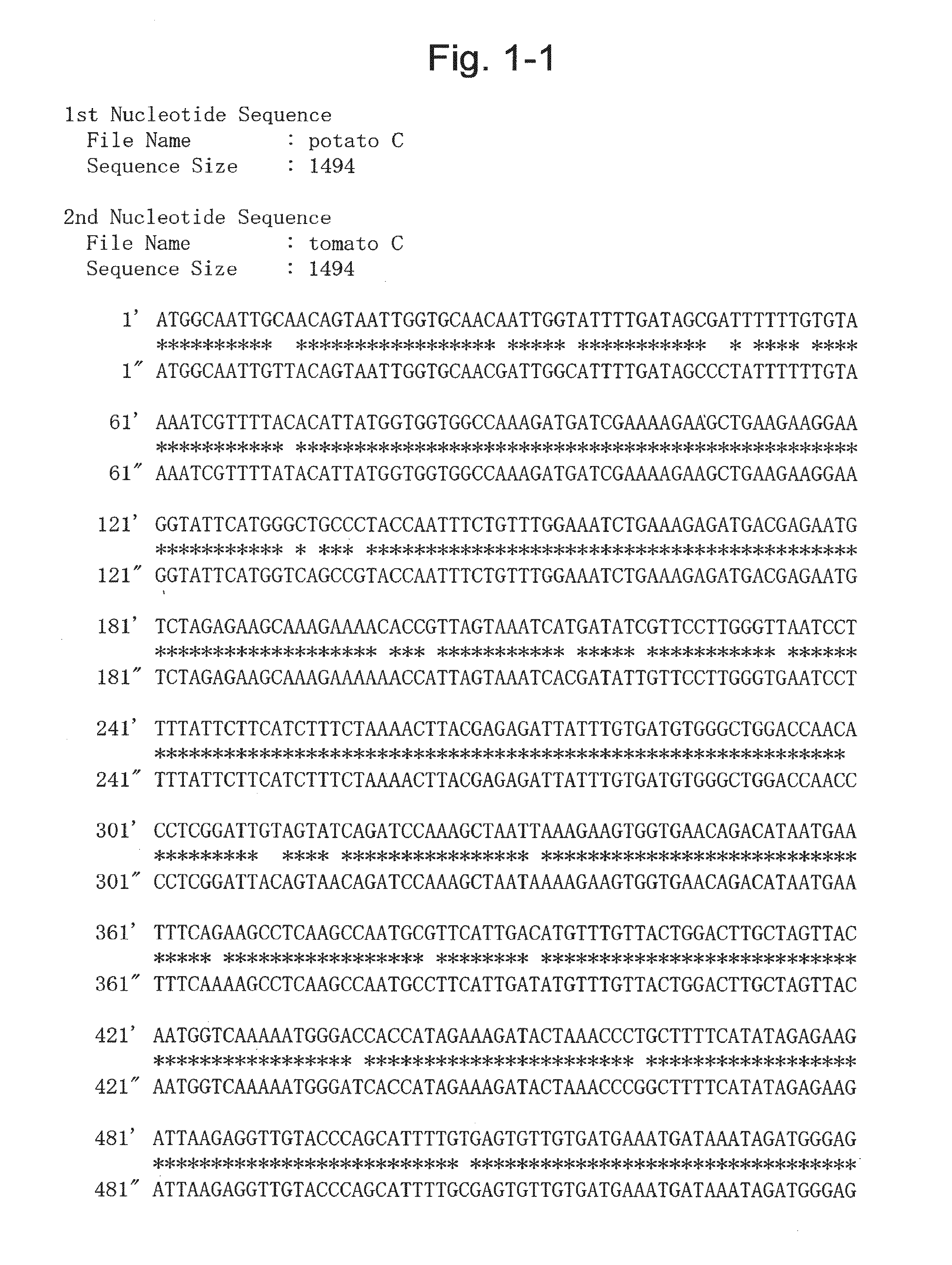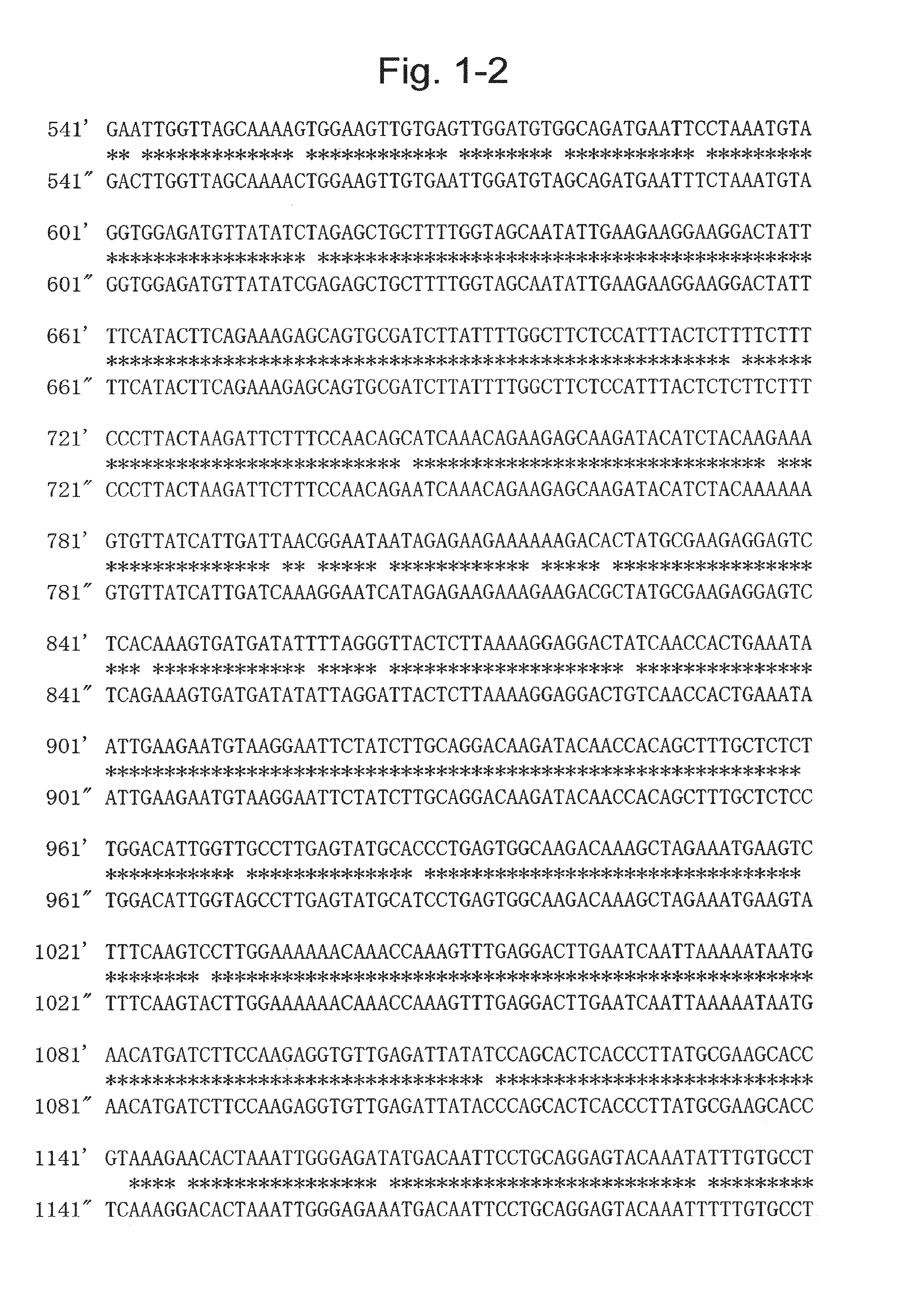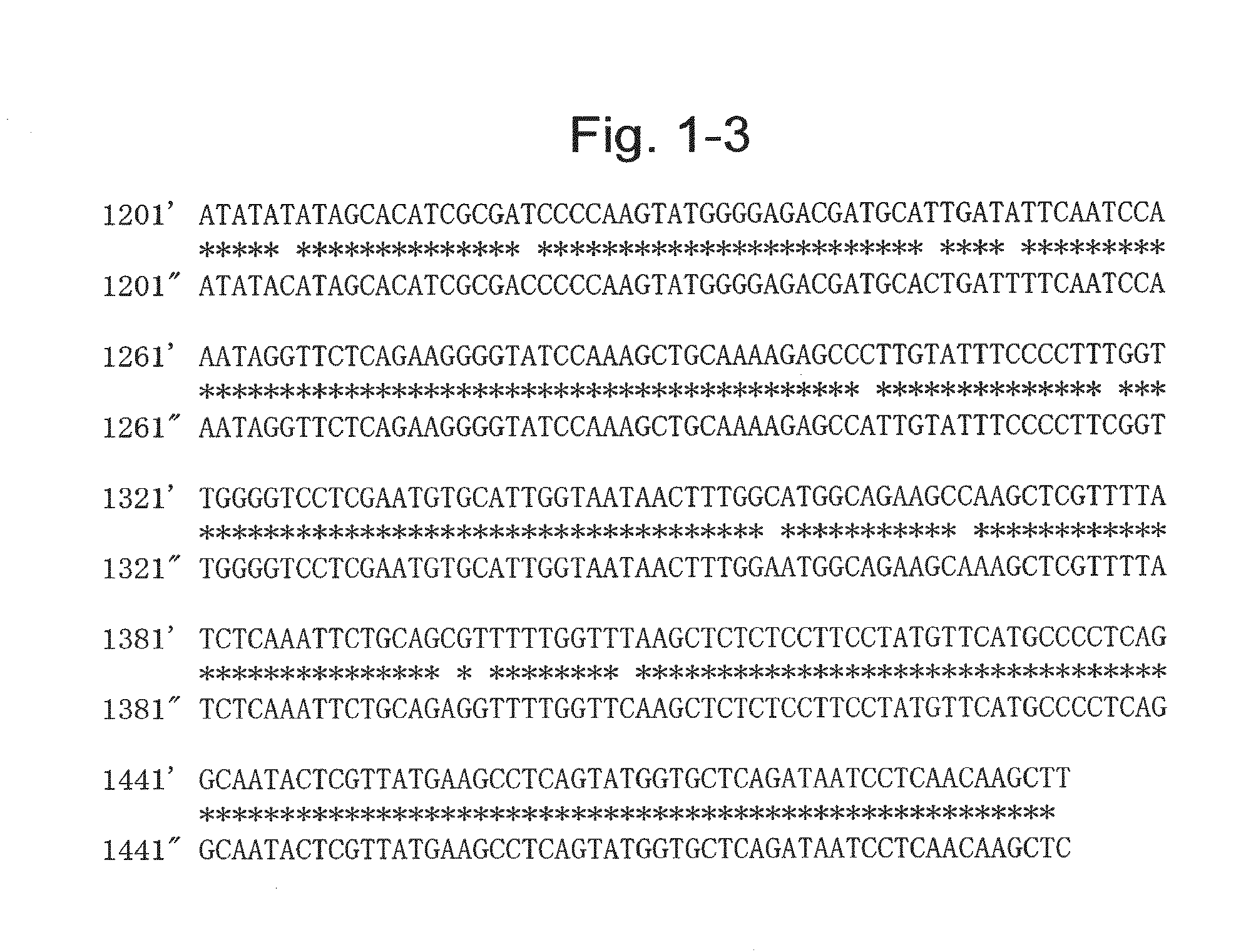Protein having glycoalkaloid biosynthetic enzyme activity and gene encoding the same
- Summary
- Abstract
- Description
- Claims
- Application Information
AI Technical Summary
Benefits of technology
Problems solved by technology
Method used
Image
Examples
example 1
Acquisition of the Full-Length Sequence of Candidate Glycoalkaloid Biosynthetic Gene C
[0099]mRNA was extracted from sprouts of a potato (Solanum tuberosum) variety, “Sassy” using RNeasy (QIAGEN). Total cDNA synthesis was carried out using a SuperScript First-Strand System (Invitrogen). It is said that aglycone of a glycoalkaloid is formed with cholesterol, but this has not been proved (Non-Patent Literature 1). However, assuming that the aglycone is formed with a cholesterol-related compound, there must be some steps of hydroxylation. In this case, at least three types of enzymes (i.e., cytochrome P450 monooxygenase, dioxygenase, and / or NADPH-flavin reductase) are probably involved in the steps of hydroxylation. Of these, cytochrome P450 monooxygenase was designated herein as a target. As a gene expressed in a potato, the TC135549 gene, for which many EST clones have been isolated from sprouts, was selected based on the information disclosed in Release 11.0 of the DFCI Potato Gene I...
example 2
Isolation of the Genomic Gene of Candidate Glycoalkaloid Biosynthetic Gene C
[0101]Genomic DNA was extracted from “Sassy” using RNeasy (QIAGEN). PCR was performed using the primers used in Example 1 for determination of the nucleotide sequence of the full-length genomic DNA (SEQ ID NO: 5). The DNA was found to contain four introns.
example 3
Vector Construction for Production of a Transformant Having the Suppressed Candidate Glycoalkaloid Biosynthetic Gene C
[0102]The above gene was suppressed through transformation by a method comprising inducing expression of a gene fragment of a reverse complementary strand structured to be driven by a powerful promoter (which is generally referred to as an RNAi method for plants) (Chuang and Meyerowitz, Proc Natl Acad Sci, USA, 97, 4985-90 (2000); Wesley et al., Plant J., 27, 581-90 (2001)). The full-length cDNA obtained in Example 1 was subjected to PCR using primers (U724: GAGCTCTAGAGAAGCAAAGAAAACACC (SEQ ID NO: 8); and U725: GGATCCATATGCTAACCAATTCCTCCCATC (SEQ ID NO: 9)) (PCR conditions: 95° C. for 5 minutes; 30 cycles of 95° C. for 30 seconds, 55° C. for 30 seconds, and 72° C. for 30 seconds; and 72° C. for 10 minutes). Thus, a gene fragment was obtained. A pKT226 vector for plant transformation was prepared using a pKT11 binary vector (JP Patent Publication (Kokai) No. 2001-1613...
PUM
| Property | Measurement | Unit |
|---|---|---|
| Fraction | aaaaa | aaaaa |
| Weight | aaaaa | aaaaa |
| Weight | aaaaa | aaaaa |
Abstract
Description
Claims
Application Information
 Login to View More
Login to View More - R&D
- Intellectual Property
- Life Sciences
- Materials
- Tech Scout
- Unparalleled Data Quality
- Higher Quality Content
- 60% Fewer Hallucinations
Browse by: Latest US Patents, China's latest patents, Technical Efficacy Thesaurus, Application Domain, Technology Topic, Popular Technical Reports.
© 2025 PatSnap. All rights reserved.Legal|Privacy policy|Modern Slavery Act Transparency Statement|Sitemap|About US| Contact US: help@patsnap.com



